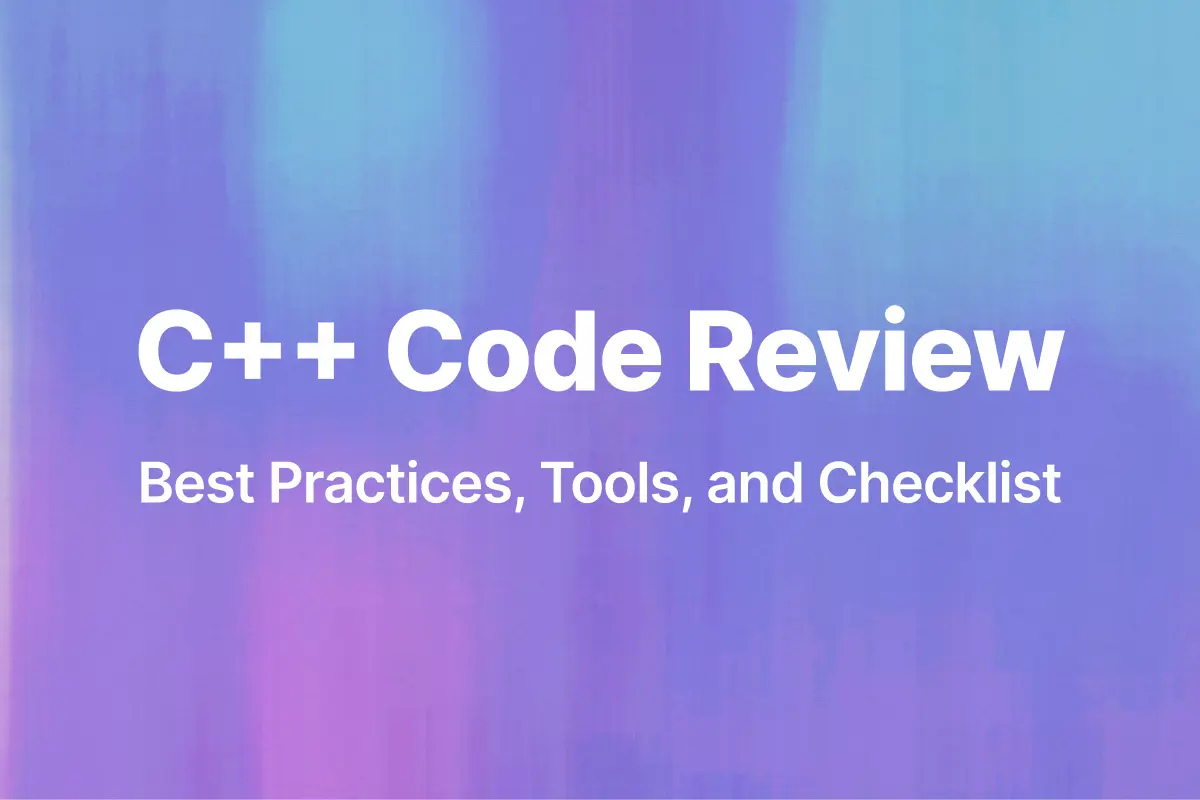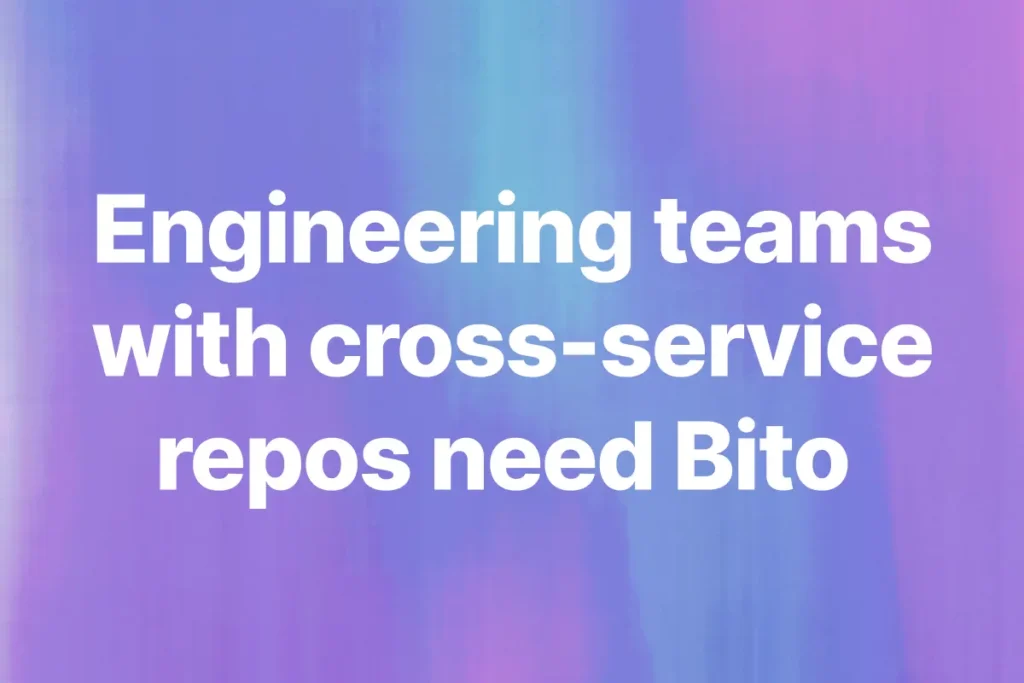The rise of AI coding tools like GitHub Copilot and ChatGPT has accelerated development velocity, but it has also created new C++ code review challenges. Developers are shipping more code faster, often using patterns they don’t fully understand. AI-generated code can look correct while hiding subtle issues that only manifest under specific conditions. The vibe coding trend—where developers rely on AI suggestions without deep understanding—makes thorough code review more critical than ever.
This guide addresses the real challenges C++ teams face in modern development environments. You’ll learn to identify the subtle issues that automated tools miss, leverage AI-powered review tools effectively, and build review processes that scale with your team’s velocity without sacrificing quality. Whether you’re reviewing AI-generated code or refactoring legacy systems, you’ll develop the skills to catch problems before they reach production.
Reviewing C++ code isn’t just about checking if a function works. You’re evaluating memory ownership, thread safety, performance implications, and how readable the logic will be three months from now—often under time pressure and with limited context.
You’ve probably seen it:
- PRs with 500+ lines of deeply nested templates
- Smart pointer misuse hidden under macros
- Style debates clogging comments while actual bugs go unnoticed
The stakes are high. One overlooked race condition or memory leak can take down production.
Meanwhile, dev teams work across GitHub, GitLab, or Bitbucket, often using CI/CD, GitHub Actions, or tools like GitHub Copilot for code generation. With AI entering the equation, reviewers need to adapt—not by skipping steps, but by reviewing smarter.
In this post, you’ll learn how to:
- Structure effective C++ code reviews
- Catch common pitfalls in memory and performance
- Use AI (specifically Bito) to make reviews faster and safer
- Apply a reliable checklist to every PR—no guesswork, no time waste
What is C++ code review?
Most developers think code reviews exist to catch bugs before they reach production. That’s like saying Formula 1 racing exists to test tire durability—technically true, but missing the bigger picture.
Code reviews are collaborative architecture discussions disguised as quality checks. They’re where design decisions get validated, where knowledge transfers between team members, and where the long-term maintainability of your system gets determined. In C++, this matters exponentially more than in garbage-collected languages.
C++ code operates on three distinct levels of complexity, and effective reviews must address all three:
Surface Level: Syntax, formatting, and style consistency. This is what most reviews focus on, and it’s the least important. Tools handle this better than humans.
Semantic Level: Algorithm correctness, logic flow, and functional requirements. This matters, but it’s not unique to C++.
System Level: Memory management, performance implications, thread safety, and architectural impact. This is where C++ reviews become critical. A single poorly reviewed template can instantiate hundreds of unnecessary copies. A misunderstood memory access pattern can create race conditions that manifest only under production load.
I learned this distinction the hard way during a code review of what appeared to be a simple string processing function. The logic was correct, the style was clean, but the implementation used recursive calls with stack-allocated buffers. Under normal conditions, it worked perfectly. Under heavy load with deeply nested input data, it blew the stack and crashed the entire service.
The semantic review passed. The system-level review failed catastrophically.
The real problems C++ developers face during code reviews
The technical minefield
Memory management blind spots
RAII sounds simple in theory: tie resource lifetime to object lifetime. In practice, it’s where most C++ reviews fail. Reviewers check for obvious memory leaks but miss the subtle issues that cause real problems.
I’ve seen countless reviews approve code like this:
class ResourceManager {
std::unique_ptr<Resource> resource_;
public:
void initialize(const Config& config) {
resource_ = std::make_unique<Resource>(config);
// What happens if Resource constructor throws?
// What about re-initialization?
// Is this thread-safe?
}
};
The code follows RAII principles and uses smart pointers correctly, but it creates a minefield of edge cases. Exception safety isn’t guaranteed, re-initialization behavior is undefined, and thread safety depends on usage patterns that reviewers rarely consider.
Template complexity overload
Templates represent C++’s greatest strength and its most dangerous weakness. They enable powerful abstractions and zero-cost optimizations, but they also create code that’s nearly impossible to review effectively.
Template code fails reviews in two ways: either reviewers don’t understand the implementation and approve it blindly, or they get lost in template metaprogramming details and miss architectural issues. I’ve participated in three-hour review sessions debating SFINAE techniques while completely missing that the template would instantiate thousands of copies for common use cases.
Concurrency nightmares
Multithreaded C++ code represents the final boss of code reviews. Race conditions hide in the spaces between lines. Data races lurk in seemingly innocent member function calls. Memory ordering requirements create dependencies that span multiple compilation units.
The worst part? Most concurrency bugs only manifest under specific timing conditions that never occur during development. They emerge months later under production load, often in components that haven’t changed in weeks.
The human element
The expertise gap
C++ expertise isn’t binary—it’s a vast spectrum spanning decades of language evolution. A developer who masters modern C++17 features might struggle with legacy C++98 code. Someone comfortable with system programming might miss game development performance considerations.
This creates an impossible situation: junior developers can’t effectively review senior code, but senior developers don’t have time to review everything junior developers produce. The result is either superficial reviews or development bottlenecks.
Time pressure vs. thoroughness
Thorough C++ code reviews take time—often hours for complex changes. Understanding memory management implications requires mental simulation of object lifetimes. Evaluating template designs requires instantiation analysis. Assessing thread safety requires reasoning about concurrent execution paths.
But development schedules rarely account for this reality. Reviews get rushed, complex changes get superficial analysis, and the really important architectural decisions get waved through because “we need to ship.”
Legacy code paralysis
Every C++ codebase contains archaeological layers of different eras. C++98 foundation code mixed with C++11 smart pointers and C++17 structured bindings. Multiple memory management paradigms coexisting in the same system. Different threading models layered on top of each other.
Reviewing changes to legacy code becomes an exercise in archaeology. You’re not just evaluating the new code—you’re analyzing its interaction with fifteen years of accumulated technical decisions. Should you modernize surrounding code? Will changes break assumptions made by other components? How do you improve code quality without destabilizing working systems?
Process pitfalls
Tool limitations
Traditional diff-based review tools fail spectacularly for C++ refactoring. They show line-by-line changes but miss the semantic transformations that matter. When someone extracts a template, moves functions between classes, or refactors inheritance hierarchies, the diff becomes meaningless noise.
Reviewers end up guessing about the overall impact of changes based on fragmented line diffs. Critical architectural decisions get lost in the mechanical details of file modifications.
Context switching costs
C++ systems are complex. Understanding a code change often requires loading substantial context into your mental model—the class hierarchy, template relationships, memory ownership patterns, and concurrency assumptions. This context loading takes time and mental energy.
When reviewers jump between different parts of the system throughout the day, they never build sufficient context to provide meaningful feedback. They catch syntax errors and obvious bugs but miss the architectural implications that determine system quality.
Documentation disconnect
C++ code and its documentation evolve at different rates. Code changes constantly through refactoring, optimization, and bug fixes. Documentation updates lag behind, creating gaps between what the code does and what reviewers think it does.
This disconnect is particularly dangerous in C++ because so much depends on implicit contracts—memory ownership, exception safety guarantees, thread safety assumptions. When documentation doesn’t match implementation, reviewers can’t properly evaluate whether changes maintain these contracts.
What you should actually be looking for in a C++ code review
Forget style wars. A solid C++ code review focuses on risk, maintainability, and intent. Here’s what experienced reviewers prioritize:
- Logic integrity: Does the code do what it’s supposed to? Are the edge cases handled?
- Memory safety: Are ownership rules respected? Are smart pointers used correctly?
- Performance: Any unnecessary allocations? Copies where a reference would work?
- Thread safety: If concurrency is involved, are mutexes and shared states safe?
- Readability and maintainability: Would another dev understand this code in a week?
- Test coverage: Is there a test? Does it actually test something meaningful?
Each of these areas has its own nuance in C++. For example, std::unique_ptr may look correct until you realize it’s hiding a shallow copy issue in a container. Or a seemingly innocent loop can introduce quadratic time in a critical path.
C++ code review checklist
Instead of winging it or relying on instinct, top-performing teams use a consistent code review checklist. Not one bloated with every possible rule, but one tailored to catch the issues that matter.
Here’s a lean, high-signal version:
Logic
- Does the function match the intent in the issue or ticket?
- Are boundary conditions and failure states handled?
Concurrency
- Are shared resources protected?
- Any potential deadlocks, race conditions, or lock-order issues?
Memory and ownership
- Is memory correctly allocated, owned, and freed?
- Are smart pointers used appropriately (no raw
newunless justified)?
Performance
- Any redundant copies, large object passing by value?
- Are loops, maps, or sets used efficiently?
Testing
- Is there a relevant unit/integration test?
- Are edge cases and failure modes covered?
Security
- Any unchecked input, unsafe buffer handling, or risky APIs (
strcpy, etc.)?
This checklist shouldn’t be a formality. It’s a framework for asking the right questions without getting bogged down in syntax.
Why Bito is the smartest tool for C++ code reviews
Let’s be honest: Most static analysis tools for C++ are either noisy, hard to configure, or just plain shallow. They catch surface-level issues but don’t help you understand the code’s behavior.
That’s where Bito’s AI Code Review Agent stands out.
It doesn’t just lint your code. It understands your code—contextually. Bito uses AI to analyze logic paths, detect unsafe patterns, and suggest improvements without flooding you with irrelevant flags. It’s like having a senior reviewer embedded in your pull request.
What makes Bito different:
- Understands C++ constructs beyond syntax (e.g., template logic, RAII, move semantics)
- Flags real bugs, not just style issues
- Writes contextual, explainable comments in GitHub/GitLab/Bitbucket PRs
- Integrates with JetBrains, VSCode, and CI tools like Jenkins or GitHub Actions
Unlike tools like Clang-Tidy, Cppcheck, or SonarQube, Bito doesn’t require you to stitch together multiple tools to get clarity. You plug it in—and it helps you review faster and smarter.
Use Bito as your primary code review assistant. It doesn’t replace human insight—it augments it with AI-driven precision.
Read: Reasons to Try Bito’s AI Code Review Agent
What most reviewers get wrong
Even good developers make poor reviewers when they’re tired, rushed, or distracted. Some of the most common mistakes include:
- Focusing only on formatting instead of understanding functionality
- Approving PRs too quickly without verifying edge cases or test coverage
- Ignoring memory semantics, assuming smart pointers solve everything
- Writing vague comments like “clean this up” with no explanation
Also common: trying to do too much in one review. If a PR is too big to review thoroughly, request it be split. A good review isn’t a fast one—it’s a clear, actionable one.
Want a stronger code review culture? start here.
If you’re leading or scaling a C++ team, code reviews are your best quality gate—but only if you treat them as a team process, not a solo task.
Here’s what works:
- Set a clear response window (e.g., all PRs reviewed within 24 hours)
- Rotate reviewers to avoid silos and spread knowledge
- Review in pairs for tricky changes
- Use Bito to catch what people miss—especially under pressure
- Run monthly retros on common review issues or bug patterns
If your reviews feel like a formality, your team probably isn’t learning. Use them as a space to teach, question, and improve the system—not just the syntax.
C++ code review best practices (from the trenches)
Pre-review preparation
The reviewer’s mindset shift
Stop thinking like a quality gate and start thinking like a collaborator. Your job isn’t to find every possible flaw—it’s to help the author build the best possible solution within project constraints.
This mindset shift changes everything. Instead of hunting for problems, you’re evaluating trade-offs. Instead of enforcing rules, you’re sharing knowledge. Instead of blocking progress, you’re enabling better solutions.
Before opening the first file, ask yourself: What problem is this change solving? What constraints is the author working within? What knowledge can I share that will improve the solution?
Context gathering
Never start reviewing C++ code without understanding the broader context. Read the associated issue or feature request. Understand the performance requirements. Know the threading model. Identify the error handling strategy.
For complex changes, I schedule a brief synchronous discussion with the author before beginning the review. Five minutes of conversation prevents hours of confused comments and back-and-forth clarification.
Environment setup
Set up your review environment for success. This means having the full codebase available, not just the changed files. You need to trace through call sites, understand inheritance relationships, and verify template instantiations.
I maintain a dedicated review workspace with the project built and ready for experimentation. When I see questionable code, I can quickly test alternative implementations or verify compiler behavior.
Review execution strategy
The three-pass method
Effective C++ code reviews require multiple passes with different focus areas. Trying to catch everything in a single pass leads to cognitive overload and missed issues.
Architecture pass: Does the overall design make sense? Are the abstractions appropriate? Do the changes fit the existing system architecture? This pass ignores implementation details and focuses on big-picture decisions.
During the architecture pass, I’m looking for design red flags: inappropriate inheritance relationships, template abuse, violation of system boundaries, and architectural inconsistencies. If the high-level approach is wrong, implementation details don’t matter.
Implementation pass: Is the code correct and efficient? Are algorithms appropriate? Are memory management patterns sound? Are error conditions handled properly?
This is where most reviewers start, but it should be your second pass. With the architecture validated, you can focus on whether the implementation achieves the design goals effectively.
Polish pass: Style consistency, documentation quality, and maintainability concerns. This includes naming conventions, comment quality, and code organization.
The polish pass catches important but non-critical issues. Poor naming can reduce maintainability. Missing documentation can hinder future changes. But these concerns shouldn’t dominate the review conversation.
Focus areas that matter
Resource management patterns: Every C++ object has a lifetime, and every resource needs a clear ownership model. Look for RAII violations, unclear ownership transfer, and resource leaks in exception paths.
Pay special attention to factory functions, initialization sequences, and destruction order. These are where resource management bugs hide.
Exception safety guarantees: What happens when operations fail? Does the code maintain basic exception safety (no leaks), strong exception safety (rollback on failure), or no-throw guarantee (operations cannot fail)?
Most C++ code aims for basic exception safety but doesn’t achieve it. Look for resource acquisition without proper cleanup, state modifications that can’t be rolled back, and operations that can leave objects in invalid states.
API design decisions: Public interfaces in C++ have long-term consequences. They affect performance, impose constraints on future changes, and determine how easy the code is to use correctly.
Evaluate parameter types (value, reference, pointer?), const-correctness, exception specifications, and template constraints. These decisions are difficult to change once client code depends on them.
Performance implications: C++ code often has non-obvious performance characteristics. Template instantiations can explode compile times. Virtual function calls can prevent optimization. Memory allocation patterns can destroy cache performance.
Look beyond algorithmic complexity to understand real-world performance impact. Consider compilation costs, runtime overhead, and memory usage patterns.
Communication excellence
Constructive feedback frameworks
Frame feedback as questions rather than commands. Instead of “This is wrong,” try “What happens if this function is called with a null pointer?” Instead of “Use smart pointers,” try “Have you considered how this raw pointer gets cleaned up in exception scenarios?”
Questions engage the author’s problem-solving abilities and create collaborative discussions. Commands create defensive responses and shut down learning opportunities.
Teaching moments
Every code review is a knowledge transfer opportunity. When you suggest changes, explain the reasoning. When you identify potential problems, describe the failure scenarios. When you recommend patterns, show concrete examples.
I maintain a personal collection of C++ gotchas and patterns that I reference during reviews. Instead of writing lengthy explanations in comments, I link to resources that provide deeper understanding.
Escalation protocols
Not every disagreement can be resolved through comment threads. When discussions become lengthy or contentious, move to synchronous communication. Schedule a brief call or in-person discussion to align on technical approach.
For architectural disagreements that can’t be resolved between author and reviewer, escalate to a technical lead or architect. Don’t let important design decisions get made implicitly through code review fatigue.
The bottom line: review smarter, not harder
C++ gives you power, but it also gives you responsibility. Reviews aren’t about gatekeeping—they’re about protecting the system and leveling up the team.
To make your reviews count:
- Focus on logic, memory, performance, and safety
- Use a simple but effective checklist
- Let tools like Bito reduce noise and surface real issues
- Foster a team culture where feedback is constructive, not combative
Better reviews create better engineers.
Start your next review with a stronger mindset—and let Bito help you do the hard parts faster.






